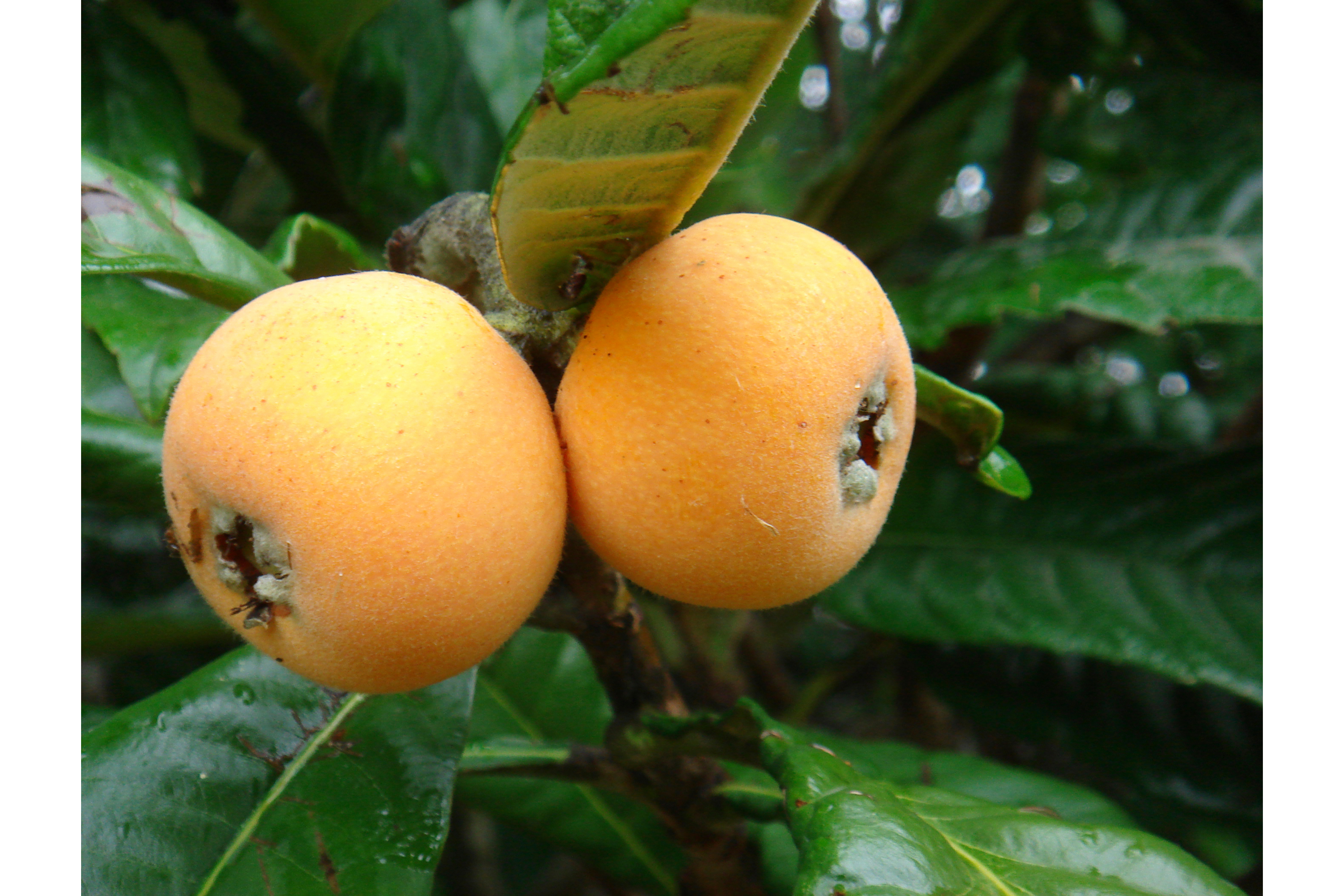Loquat
(Eriobotrya japonica)

Description
Eriobotrya japonica, commonly known as the loquat, is a fruit-bearing tree belonging to the Rosaceae family. It is native to China, but it is widely cultivated in subtropical regions around the world. The tree is highly valued for its delicious fruit, which is commonly consumed fresh or used in the preparation of jams, jellies, and other sweet treats. In this article, we will explore the botanical features, growing conditions, and uses of Eriobotrya japonica. Botanical Features Eriobotrya japonica is a medium-sized evergreen tree that can grow up to 10 meters in height. It has a rounded canopy with a dense arrangement of glossy, dark green leaves. The leaves are lanceolate to oblong-ovate in shape and can reach up to 30 centimeters in length. The upper surface of the leaves is shiny and smooth, while the lower surface is covered in fine hairs. The tree produces clusters of small white flowers in the fall or early winter. The flowers are highly fragrant and attract bees and other pollinators. The fruit of the loquat is a pome that is oblong or pear-shaped and can range in color from pale yellow to orange-red. The flesh of the fruit is juicy and has a sweet, slightly acidic flavor. Growing Conditions Eriobotrya japonica is a subtropical tree that thrives in warm, humid climates. It prefers well-drained soil that is rich in organic matter and has a pH of 5.5 to 6.5. The tree is not frost-tolerant and can be damaged by temperatures below -10°C. The tree can be propagated by seed or by grafting. Seed propagation is not recommended, as the resulting trees may not produce fruit or may produce inferior fruit. Grafting onto rootstock of the same or similar species is the preferred method of propagation. Loquat trees require regular pruning to maintain their shape and promote fruit production. The best time to prune is in late winter or early spring before new growth begins. The tree also requires regular watering, especially during dry spells. Uses Eriobotrya japonica is primarily grown for its fruit, which is eaten fresh or used in the preparation of desserts, jams, and other sweet treats. The fruit is also used in traditional medicine to treat coughs, sore throats, and other respiratory ailments. The leaves of the loquat tree have also been used in traditional medicine. They contain compounds that have been shown to have anti-inflammatory, antitumor, and antioxidant properties. Some studies have also suggested that the leaves may have potential for use in the treatment of diabetes. In addition to its culinary and medicinal uses, Eriobotrya japonica is also valued as an ornamental tree. Its attractive foliage and fragrant flowers make it a popular choice for landscaping in subtropical regions. Conclusion Eriobotrya japonica, or the loquat tree, is a valuable subtropical fruit-bearing tree that is highly valued for its sweet, juicy fruit. The tree is also used in traditional medicine and is valued as an ornamental tree. To grow the tree successfully, it requires warm, humid growing conditions and regular pruning and watering. With proper care, the loquat tree can provide years of delicious fruit and ornamental beauty.
Taxonomic tree:







